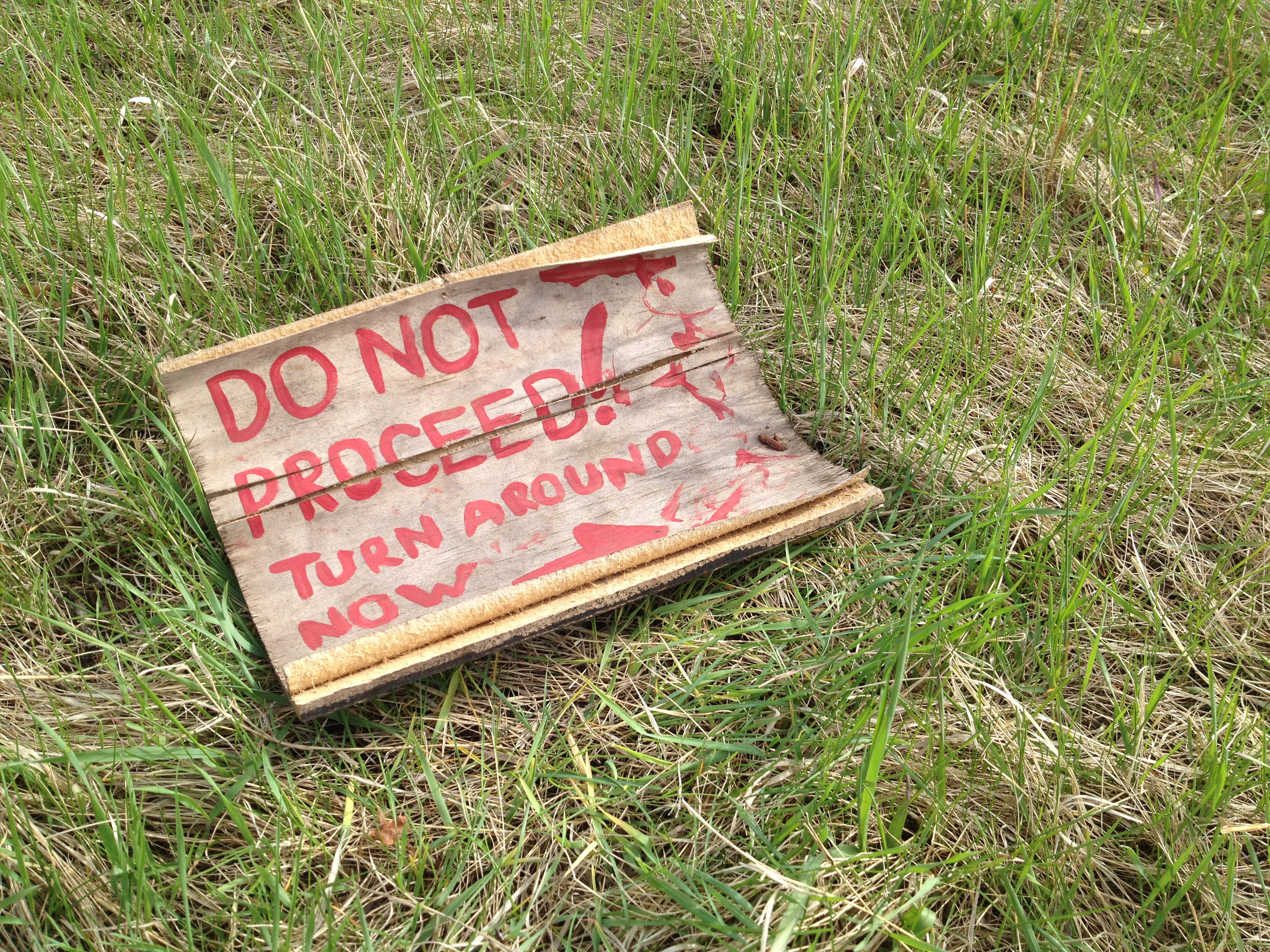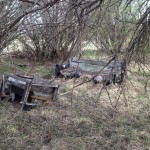I grew up in South East Mill Woods. My back gate opened into a sprawling wheat field, scattered with dense patches of forest and swamps that bellowed with frogs. In the distance, you could just make out a faded red barn and a church steeple poking through the tree line.
66th Street looking east
This area was well traversed by the kids of my neighborhood. It was where we’d hunt for tadpoles in the spring and build tree forts in the summer—a wild place where real life blended with childhood make-believe. It was this mix of field, forest and swamp between 34th & 66th Street, south of Sakaw and Crawford Plains that was known throughout my neighborhood as the Pits.
I’m glad to see the name has carried on. This sign was put up approx. 2008/09
Everything extraordinary seemed to stem from the Pits. I remember my parents waking me up to watch a hot air balloon land softly in the farmer’s field. Or the morning of my ninth birthday, when my friends and I ran into the nearby forest to play hide-and-seek and quickly discovered four bags of stolen camera equipment tossed into the tall grass. During the day, I explored new parts of the Pits or lead an expedition of classmates into its depth. At night, the darkened field turned into a silent monster patiently waiting outside our windows.
DO NOT PROCEED
Headlines like ‘Balaclava-clad man allegedly broke into a Mill Woods home’ come to mind when folks think about my neighborhood, not its natural beauty or its inspiration for childhood creativity.
The couch: the tradition continues
In the early 1970s, Mill Woods planners hoped “to create a showpiece of new urban growth that would be achieved by incorporating sound principles of social, economic and physical planning.” One way they tried to achieve this was through the preservation and incorporation of natural areas. So while by car Mill Woods can seem like a confusing mess, by foot everything is connected through walkways and green spaces. It’s also home to three City of Edmonton Natural Areas: Pollard Meadows, Starblanket Park and Graunke Park.
One of the better-made bridges
The Pits of my childhood no longer exist. The forests and swamps gave way to new homes while the once-endless wheat field is divided by the Anthony Henday. Pockets of nature remain but the sense of remote wildness I felt as a kid is gone and with it, potentially, a generation’s worth of childhood stories and folklore. So let us remember the Pits while the memories are still fresh and share those experiences, and similar stories from all across Mill Woods’s park system, to put forward a positive and more whimsical face to our community.
Graunke Park: http://www.edmonton.ca/environmental/natural_areas/graunke-park.aspx
Starblanket Park: http://www.edmonton.ca/environmental/natural_areas/starblanket-park.aspx
Pollard Meadows: http://www.edmonton.ca/environmental/natural_areas/pollard-meadows-natural-area.aspx





